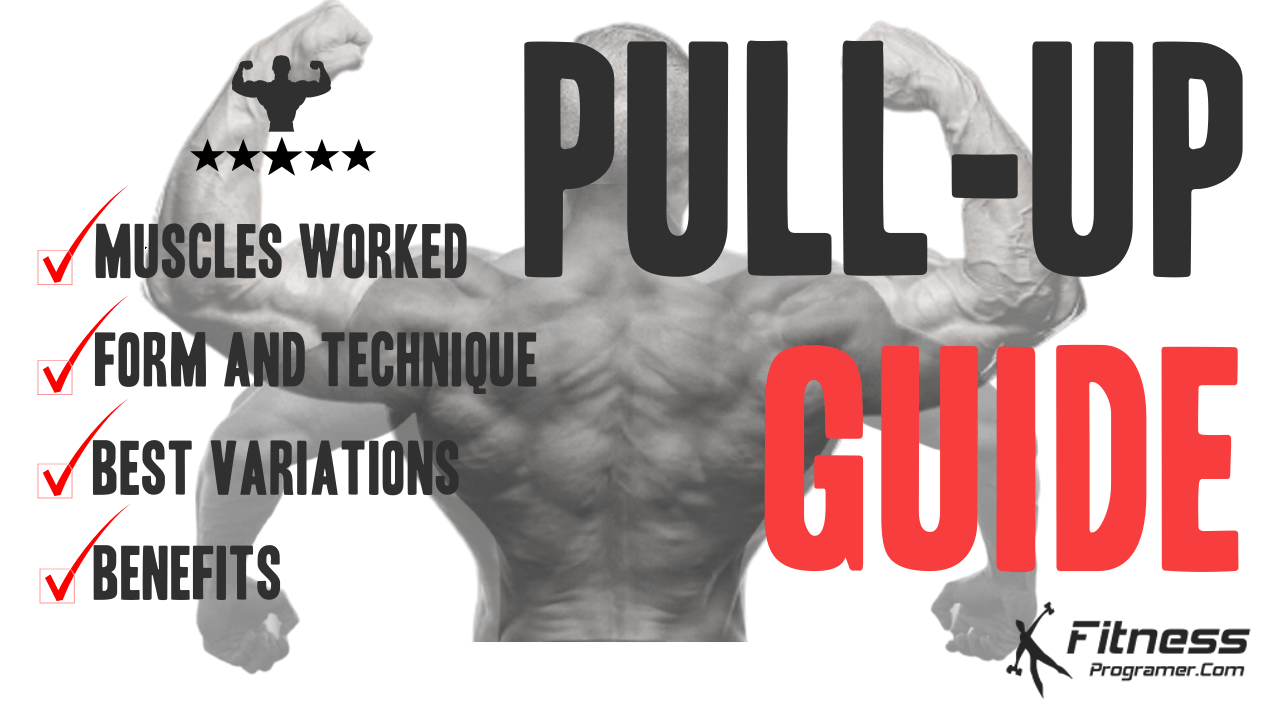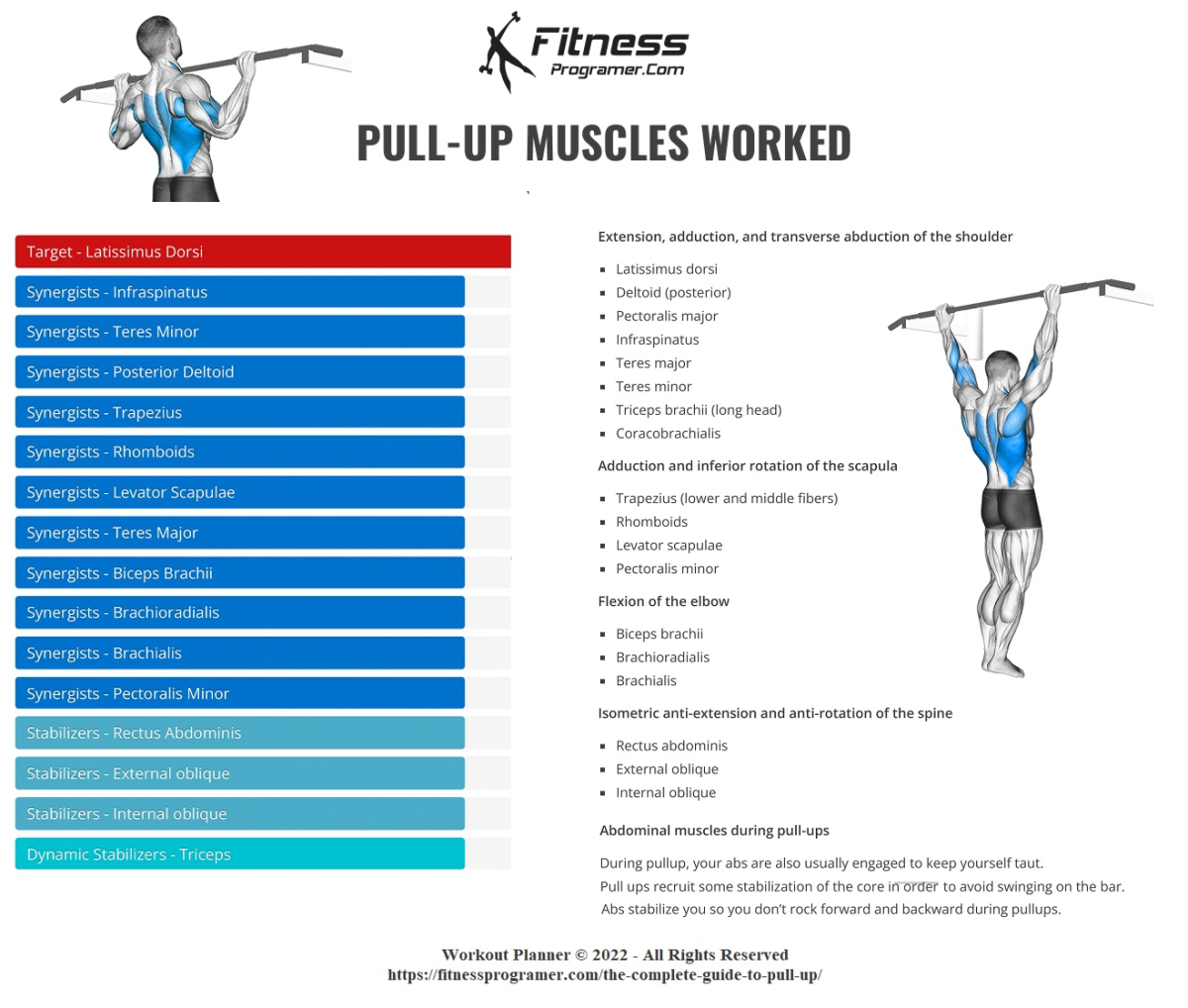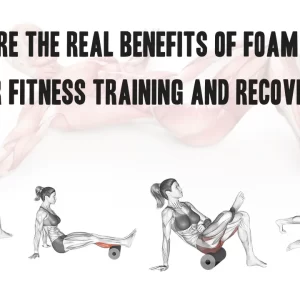Contents
The pull-up is a basic bodyweight exercise that many consider an upper-body challenge. But what if you’ve never been able to do a single pull-up? Don’t despair! This guide is designed for everyone, regardless of current strength level, to embark on a journey towards pull-up mastery.
Pull-up Overview
A standard pull-up involves gripping an overhead bar and using your upper body strength to raise your body until your chin is above the bar. Because performing the pull-up involves moving the entirety of your own bodyweight up against gravity, it takes incredible upper-body strength and trunk stability. It’s considered to be a difficult exercise for most people, partly because you must overcome gravity to lift your body.
The pull-up is a closed-chain kinetic exercise, meaning the limbs move against a fixed object (the pull-up bar) while the entire body remains suspended. It serves as a highly efficient method to develop upper body pulling strength and muscular hypertrophy.
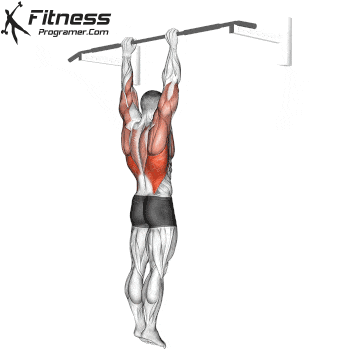
What Makes the Pull-Up So Effective?
Unlike exercises that use weights or machines, pull-ups force you to lift your own body weight. This requires significant upper body strength and core stability to overcome gravity and pull yourself up.
The ability to do pull-ups is a common test of upper body strength, used by athletes and even military personnel. With proper form and gradual progression, the pull-up can become a staple in your strength training routine.
Benefits of Pull-up
- Pull-ups build your upper body strength.
It effectively increases your upper body strength by working the muscles in your back such as the latissimus dorsi, teres major, infraspinatus, levator scapulae and trapezius. Pull-ups will help your back grow bigger, giving the body a V-shape physique that looks attractive and powerful.
- Pull-ups build strength in your arms.
pull-ups are one of the best bodyweight exercises for targeting the muscles in your arms, specifically the biceps brachii and the brachialis, your elbow flexor muscles.
- Pull-ups improve your grip strength.
The pull-up activates the brachioradialis muscles in your forearms, which increases grip strength. By enhancing your grip strength, pull-up can be useful warm-ups for other compound exercises like lat pulldowns, parallel bar push-ups, and barbell curls.
- Improves posture:
Good posture relies on the strong back and core muscles responsible for stabilizing the spine. When you strengthen these muscle groups, you can maintain an upright posture by effectively exercising the necessary muscles to keep your upper body balanced and aligned.
- Increases your functional strength
Functional exercises can improve the overall function of your body, boosting muscle strength and endurance. Pull-ups are a functional bodyweight exercise that is effective for building upper body strength. By improving your functional strength through dynamic compound exercises like pull-ups, you strengthen the relationship between your nervous and muscular systems.
How to do Pull-up
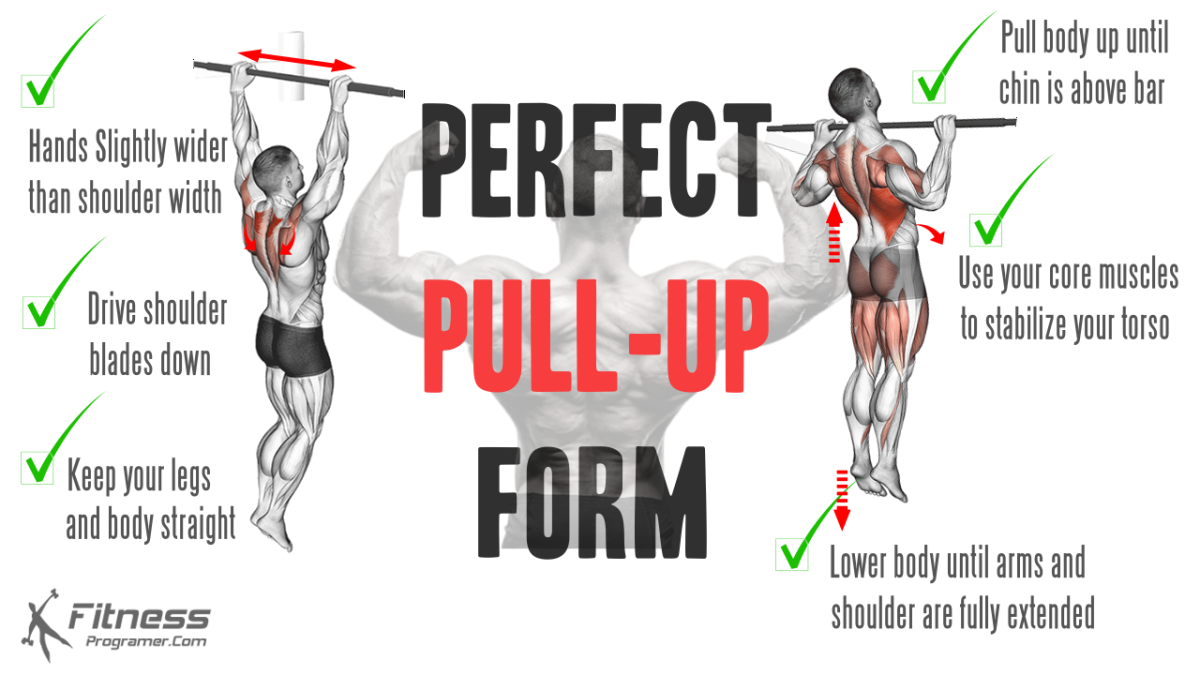
- Starting Position: A proper pull-up starts with proper hand placement. Grab the bar and position your hands slightly wider than shoulder-width apart.
- Grip Width: Range of motion will be compromised if grip is too wide. Gripping too narrow can cause your back muscles to not activate completely and can lead to too much focus on your forearm muscles. Keep your hands slightly wider than shoulder-width onto the bar.
- Controlled Movement: Try to pull yourself up as far as you can in a slow and controlled motion. Pull body up until chin is above bar.
- Core Engagement: Use your core muscles to stabilize your torso, and pull your shoulder blades back and down; they should stay this way throughout the movement.
- Controlled Descent: Don’t simply drop down from the top position. Slowly lower yourself back to the starting position with complete control over your body. This controlled descent emphasizes eccentric muscle contraction, further enhancing strength development.
What muscles do pull-ups work?
Most of the people think that it is just the Lats and the biceps that work when you do a pull up. This is simply not true. Whenever you perform any movement, almost the entire body works together in synchrony to help you execute the movement as effectively as possible.
Extension, adduction, and transverse abduction of the shoulder
- Latissimus dorsi
- Deltoid (posterior)
- Pectoralis major
- Infraspinatus
- Teres major
- Teres minor
- Triceps brachii (long head)
- Coracobrachialis
Adduction and inferior rotation of the scapula
- Trapezius (lower and middle fibers)
- Rhomboids
- Levator scapulae
- Pectoralis minor
Flexion of the elbow
- Biceps brachii
- Brachioradialis
- Brachialis
Isometric anti-extension and anti-rotation of the spine
- Rectus abdominis
- External oblique
- Internal oblique
Abdominal muscles during pull-ups
During pullup, your abs are also usually engaged to keep yourself taut. Pull ups recruit some stabilization of the core in order to avoid swinging on the bar. Abs stabilize you so you don’t rock forward and backward during pullups.
Best Pull-up variations from beginner to advanced
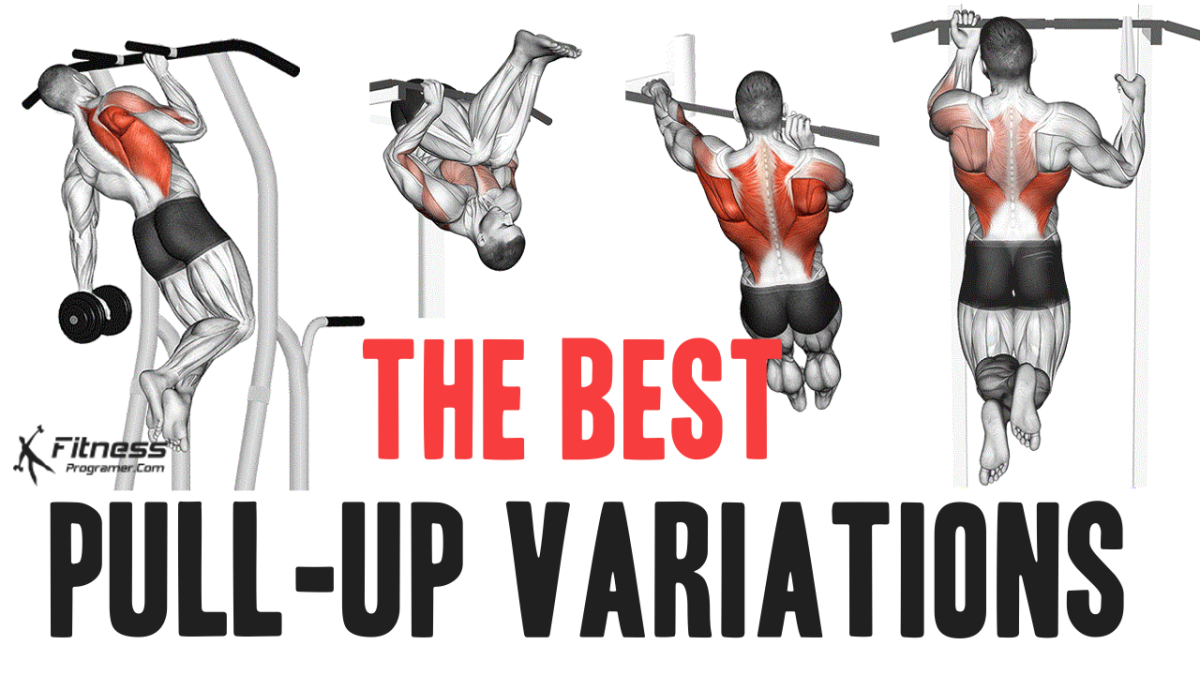
Due to the demanding nature of the pull-up, particularly for beginners, various progressions can be implemented to facilitate exercise execution. Assisted pull-up machines, resistance bands, and negative pull-ups (controlled descent from the top position) can be employed to build the necessary strength for full pull-ups. Try adding these variations of the pull-up into your training to keep workout fun and varied.
1. Dead Hang

The dead hang is a great first step on your pull-up journey. Assume a grip on a pull-up bar with arms fully extended. Maintain a rigid body posture and engage your core for optimal stability. Progressively extend hold times to build foundational strength.
If you’re new to dead hangs, begin with shorter durations, like 10-20 seconds. Gradually increase your hang time as you build strength.
2. Band Assisted Pull-up
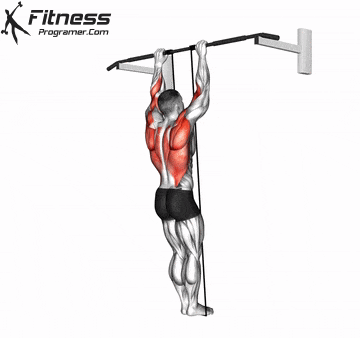
This variation utilizes the elasticity of a resistance band to provide support throughout the movement, making it an ideal exercise for beginners or those working their way back up from a break.
Thinner bands provide less assistance, mimicking a more challenging pull-up, while thicker bands offer greater support for those new to the exercise. This progressive overload principle lets you gradually increase the difficulty as you build strength, constantly challenging yourself on the road to unassisted pull-ups.
3. Assisted Pull-up Machine
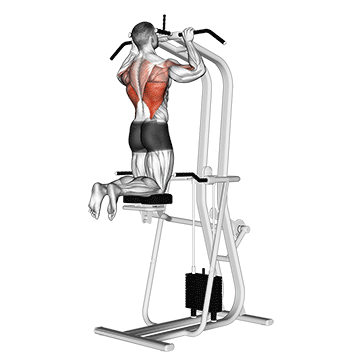
The assisted pull-up machine is a valuable tool for building the strength and technique needed for unassisted pull-ups.
The mechanism of action is similar to that of the banded pull up, but here the assistance curve is proportionate throughout the entirety of the movement.
With resistance bands, you’ll get the most assistance at the bottom part of the movement – this is also the most difficult part of the exercise. With the assisted pull-up however, you are supported throughout the entire movement. Therefore, the assisted pull-up machine is a little easier because you don’t have to lift all your weight at the peak of the contraction.
As you get stronger, you can gradually decrease the level of assistance on the machine, eventually transitioning to full pull-ups. With consistent practice and gradually decreasing the assistance, you’ll be a pull-up pro in no time!
4. Brachialis Pull-up
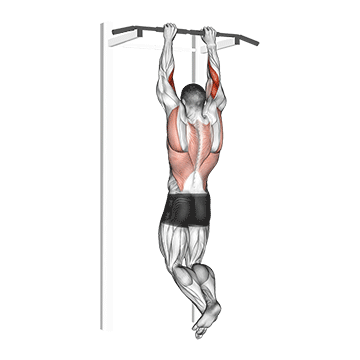
Brachialis pull-ups are a stepping stone to full pull-ups. This technique shortens the pull-up movement, focusing on the brachialis in the initial elbow flexion phase. Instead of pulling yourself all the way up to your chest or chin, you only pull yourself up until the bar reaches the top of your head. It strengthens the brachialis, a key contributor to successful pull-ups, improves pulling form, and ultimately prepares you to conquer full pull-ups with greater confidence. Keep practicing, and you’ll be a pull-up pro in no time!
5- Commando Pull-up
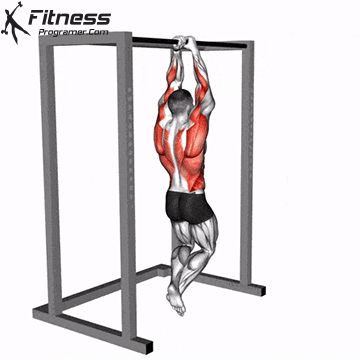
Commando pull-ups are an effective pull-up variation that can build upper body strength. It is an intermediate skill level exercise and works as part of the back and biceps muscle tissue.
Now that you’ve unlocked the power of the brachialis pull-up, consider incorporating commando pull-ups for an even greater challenge. This advanced variation is an excellent way to elevate your upper body strength and grip.
6. Chin-Up
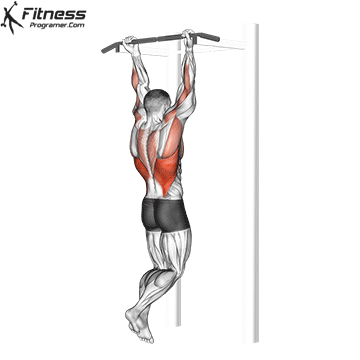
A chin-up utilizes a supinated grip, where the palms face your body as you grasp the bar. This supinated position places greater stress on the biceps brachii during elbow flexion. It’s a great exercise to progress to after building some foundational upper body strength.
7. Archer Pull-up
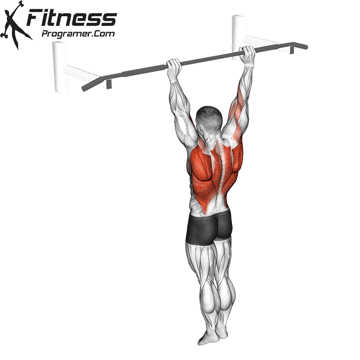
Archer pull-ups are a variation of pull-ups that allow you to focus more on developing one-arm pulling power. Targeting primarily the lats and to a lesser extent the biceps, forearms, mid-back, shoulders and traps, this gymnastics move is a good exercise for those with advanced fitness and exercise experience.
8. Jumping Pull-up
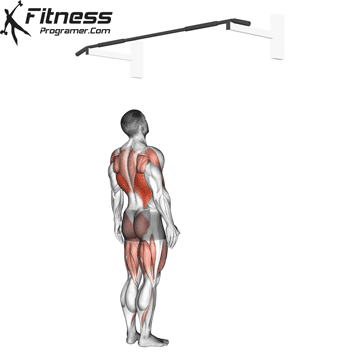
If you want to improve athletic strength, jumping pull-ups are good option for you.
Jumping pull-up is a type of plyometrics exercise that primarily trains your upper and lower body strength and explosiveness. It is also a quick and effective exercise to build strength.
Plyometrics exercises are explosive aerobic moves that increase speed, quickness, and power and they work your whole body.
The sequence of jumping, gripping, and pulling , creates a vertical body movement that extends the ankles, knees, and hips. In combination with the pulling movement, the leg muscles, abdominal muscles, latissimus dorsi and arms are activated. This creates an efficient movement where the whole body and all joints work in coordination.
9. Muscle-Up
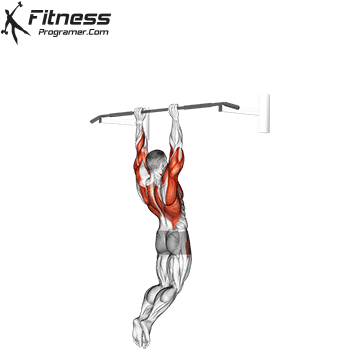
Muscle-up is an advanced explosive power and strength trainings exercise often used in calisthenics and crossfit training. In order to do this visually impressive movement, you first need to perfectly master pull-ups and straight bar dips, its two main movements.
The muscle up starts by working your back muscles, forearms, and biceps. You then transition into a straight bar dip, which works your shoulders, triceps, chest, and serratus anterior. During that time, your entire core works to keep you stable, allowing you to put all of your force into the bar.
The muscle-up is a sport-specific movement that calisthenics, crossfit and competitive fitness athletes must be able to perform. This challenging exercise will help you build strength and endurance in your upper body.
10. Upside Down Pull-up
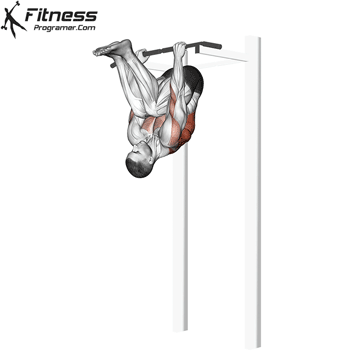
One of the most challenging of the pull-up variations is the upside-down pull-ups. This exercise requires strong arms and is often preferred by advanced athletes in their calisthenics training.
Just like other types of pull-ups, upside down pull-ups develop your arm muscles and back muscles. But the most important thing to note is to make sure you can lift your own body weight before doing this exercise.
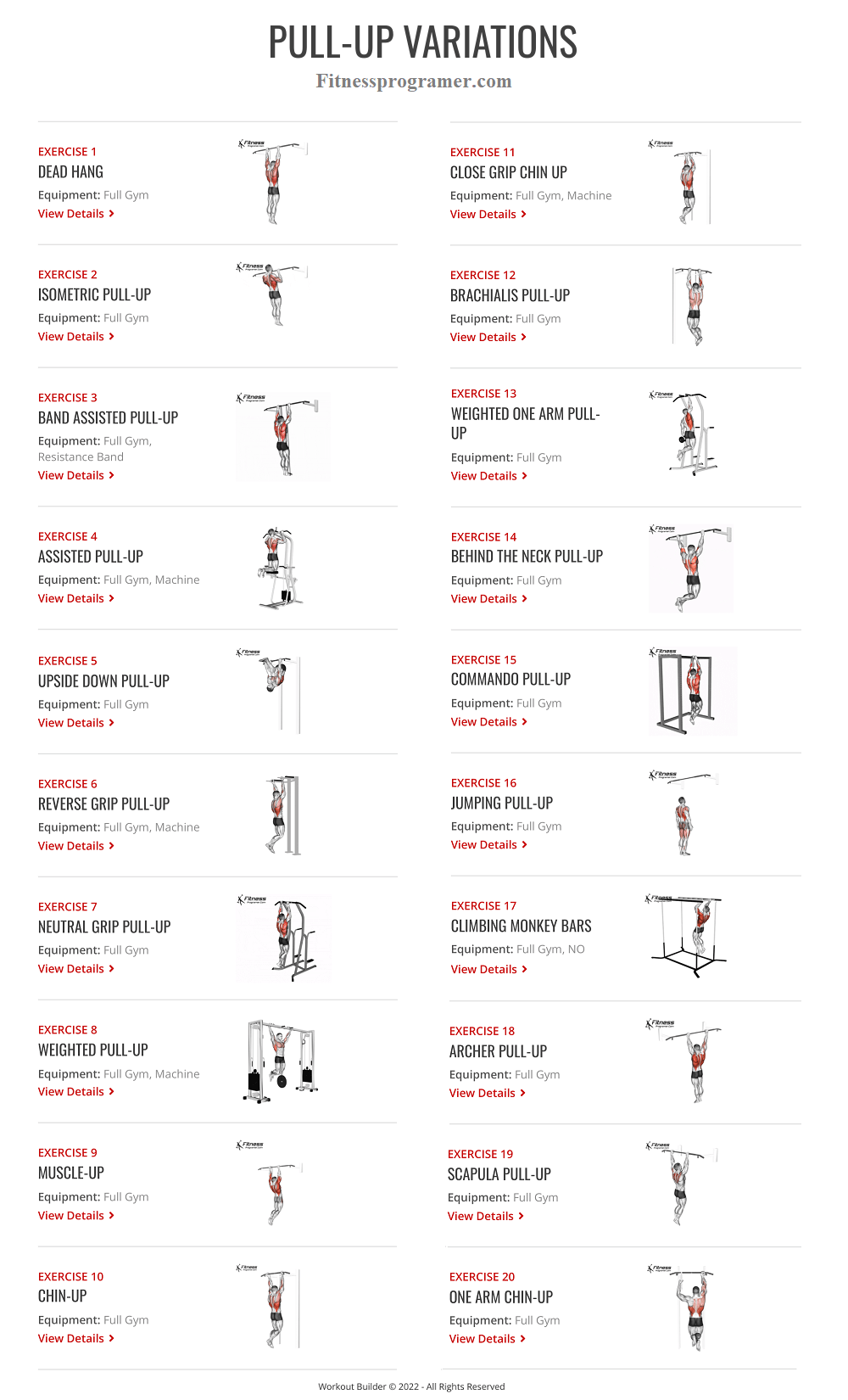
5 frequently asked questions about pull-ups:
1. How many pull-ups should I be able to do?
There is no one-size-fits-all answer to this question. The number of pull-ups you can do will depend on your age, sex, weight, and overall fitness level. However, as a general guideline, here are some benchmarks:
- Beginner: 0-3 pull-ups
- Intermediate: 4-8 pull-ups
- Advanced: 8+ pull-ups
If you can’t do any pull-ups yet, don’t worry! There are many progressions you can do to build up your strength, such as negatives, assisted pull-ups, and band-assisted pull-ups.
2. How often should I do pull-ups?
You can do pull-ups 2-3 times per week, with at least one rest day in between to allow your muscles to recover. Aim for 2-3 sets of as many reps as you can do with good form.
3. Overhand vs. underhand grip: which is better?
Both grip variations offer benefits:
- Overhand grip (palms facing away): This grip targets the latissimus dorsi (lats) more effectively, the primary back muscle group.
- Underhand grip (palms facing you): This grip emphasizes the biceps brachii in the upper arms to a greater degree.
You can alternate sets with different grips or choose the one that feels most comfortable and aligns with your training goals.
4. Is it okay to use momentum to swing during pull-ups?
While using momentum can help you get a few extra reps initially, it can hinder proper form and limit strength gains in the long run. Focus on a controlled movement where you’re pulling yourself up with your muscles.
5. Are pull-ups bad for my shoulders?
Pull-ups are not typically bad for your shoulders. However, if you have shoulder pain, it is important to make sure that you are doing the exercise with proper form. You may also want to start with a wider grip or use a neutral grip (palms facing each other) to reduce stress on your shoulders.
If you are concerned about any pain you experience while doing pull-ups, be sure to consult with a doctor or physical therapist.
References:

